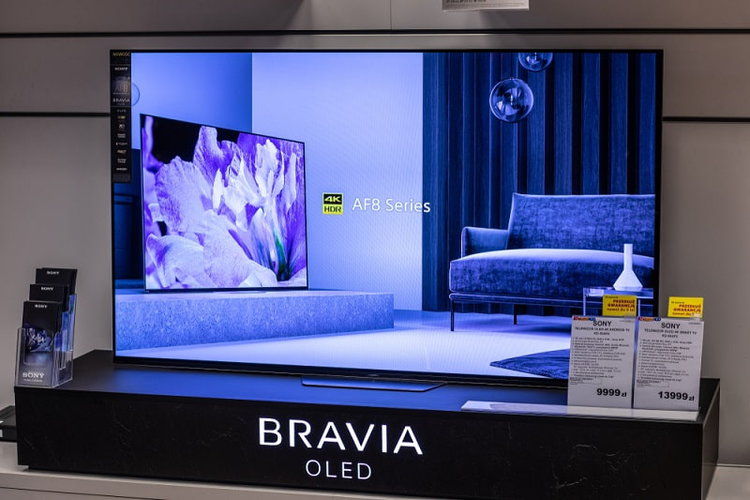How Common is 4K Content?

What To Know
- Despite the buzz around 4K, only a small percentage of movies are actually in this resolution, with many filmed in higher resolutions but edited and released in 1080p.
- 4K content is not mainstream yet, with most TV shows and news channels still broadcasting in 1080p due to cost constraints.
- While the sale of 4K TVs has grown significantly, there remains a disparity between the availability of 4K content and the proliferation of 4K TVs in households.
In this guide, we’ll explore the actual penetration of 4K content in today’s streaming and broadcasting landscapes, clarifying the extent of 4K availability and its integration with your viewing habits.
Keep reading to find out!
Quick Navigation
Is 4K Content Mainstream?
No, 4K is not mainstream yet.
High-definition content became mainstream over a decade ago. It took over TV, broadcasting companies, and the film industry. Nowadays, filming something in anything less than HD is unacceptable.
We aren’t quite there yet when it comes to Ultra HD 4K content. This is exemplified when you turn on your standard TV and start flipping through the channels. For the most part, all TV shows and news channels are only shot and broadcasted in 1080p — sometimes even lower!
Why is this? It’s simply too expensive to film and broadcast in 4K.
As of right now, the demand for 4K content isn’t very high. People consider HD video acceptable and are happy enough with 1080p resolution to continue watching their favorite show or channel.
That’s not to say some companies and services aren’t trying to convert to 4K. Globally, there are about 189 UHD services. Most of those are live services. With that being said, as of 2020, the United States does not have a single 24/7 live Ultra HD service.
The 4K world still has a long way to go. It would be incorrect to say that it is currently in the mainstream or has reached its peak.
How Common Are 4K TVs in Households?
If you walk into a Best Buy or other technology superstore, you’ll be welcomed by wall after wall of giant, flat-screen TVs advertised as 4K. While broadcasting services may not be offering very much 4K content, the TV industry is consistently manufacturing and selling 4K TVs.
In 2018, an estimated 31% of American households had 4K Ultra HDTVs. That’s a significant jump from the measly 1% of 4K Ultra HDTV owners in 2014.

Sales for 4K TVs are steadily growing. People want the possibility of watching things in 4K, even if their favorite channels or shows aren’t broadcasting in the improved resolution yet. It’s also important to note that people aren’t just using their TVs to watch TV anymore.
There are a plethora of streaming devices and services available that can be enjoyed on a TV or computer. Now, someone can spend hours a day watching their TV screen without flipping to a traditional cable or satellite-provided channel.
Are There a Lot of Movies in 4K?
Surprisingly, there are not a lot of movies in 4K.

We automatically assume that multi-million dollar films are all shot and edited in 4K. After all, if they have seemingly unlimited money, why not go all out and make a movie in ultra-high resolution?
It’s important to point out that 1080p is considered HD, which is the standard resolution for film right now. The images are clear crisp, and don’t have the annoying graininess lower resolution videos have.
With that being said, not many movies are actually in 4K. It’s estimated that a mere five percent of films on Netflix are available to stream.
Think about the high-quality, blockbuster films you can watch on the streaming service. The reality is it’s far more expensive and tedious to shoot and edit in 4K, let alone upload and allow millions of users to stream in Ultra HD.
Even widely successful (and expensive) movies like one of the Avengers movies aren’t actually in 4K. It was shot in 4K and edited in the original Ultra HD resolution but, for whatever reason, was only released in 1080p.
This isn’t uncommon for film. According to Engadget, “Even for movies and shows shot with 6K or 8K cinema cameras, nearly every finished film was edited at standard HD resolution, and then artificially enlarged to 4K.”
This doesn’t stop production companies and DVD manufacturers from advertising the film as 4K, and in some ways, it technically is. But it’s very difficult to watch a film in all its original crispy clear 4K glory.
Where to Watch the Best 4K Content
The best place to watch 4K content is through a streaming service. They are upfront about the resolution for each piece of content.
These streaming services are also far more affordable than cable or other traditional TV channel providers. They’re also predominantly ad-free.
There are also streaming devices that provide 4K content. The Amazon Fire TV Stick and Apple TV are two popular examples.
You can also talk to your cable providers about what 4K packages they offer. Some providers charge a few extra dollars for 4K content.
However, in both cases, it’s important to keep in mind that the original content must be in 4K first. A streaming device or 4K TV package cannot transform a 1080p movie into a 4K movie.
Wrapping Things Up
Many might be surprised to learn that 4K content isn’t as common as it’s made out to be. While TV manufacturers are selling more 4K TVs, there isn’t an abundance of 4K content to play on them.
With that being said, viewers can expect more 4K content in the future, from traditional cinema to live TV broadcasting. The high-res future of 4K is nearby, and it’s just taking its time.
The switch to HD was incredibly successful, so industries aren’t eager to spend all that time and money switching to yet another resolution.
Do you feel like you have access to a lot of 4K content? Where is your favorite place to watch 4K videos and movies?
Let us know in the comments below.
Good luck!
Meet Vance. He’s a proud dad, a seasoned Electronics Engineer, and an avid tech lover. His proficiency in electronics and troubleshooting skills were instrumental in crafting Pointer Clicker. Vance is passionate about simplifying tech for those who aren’t well-versed in it.

